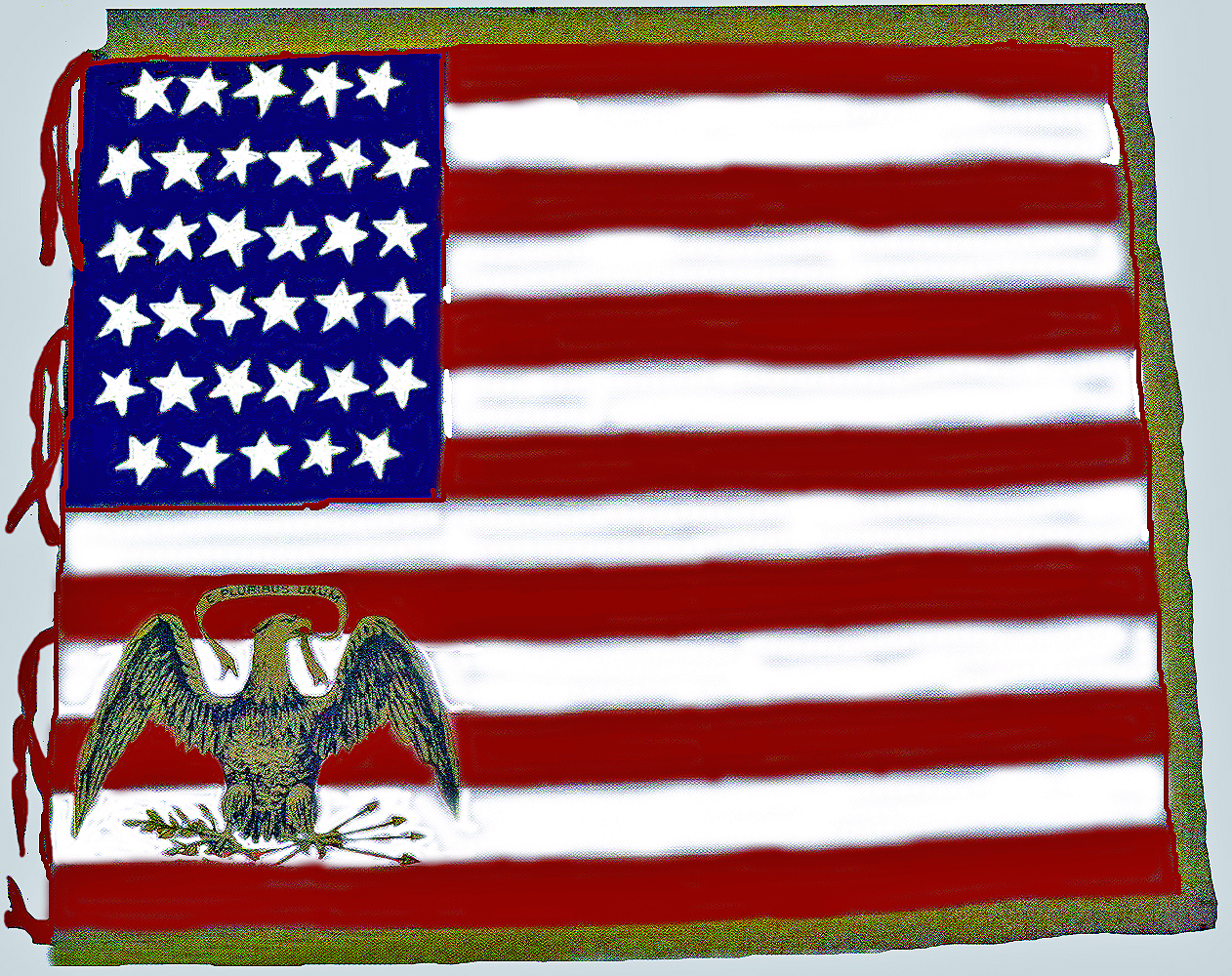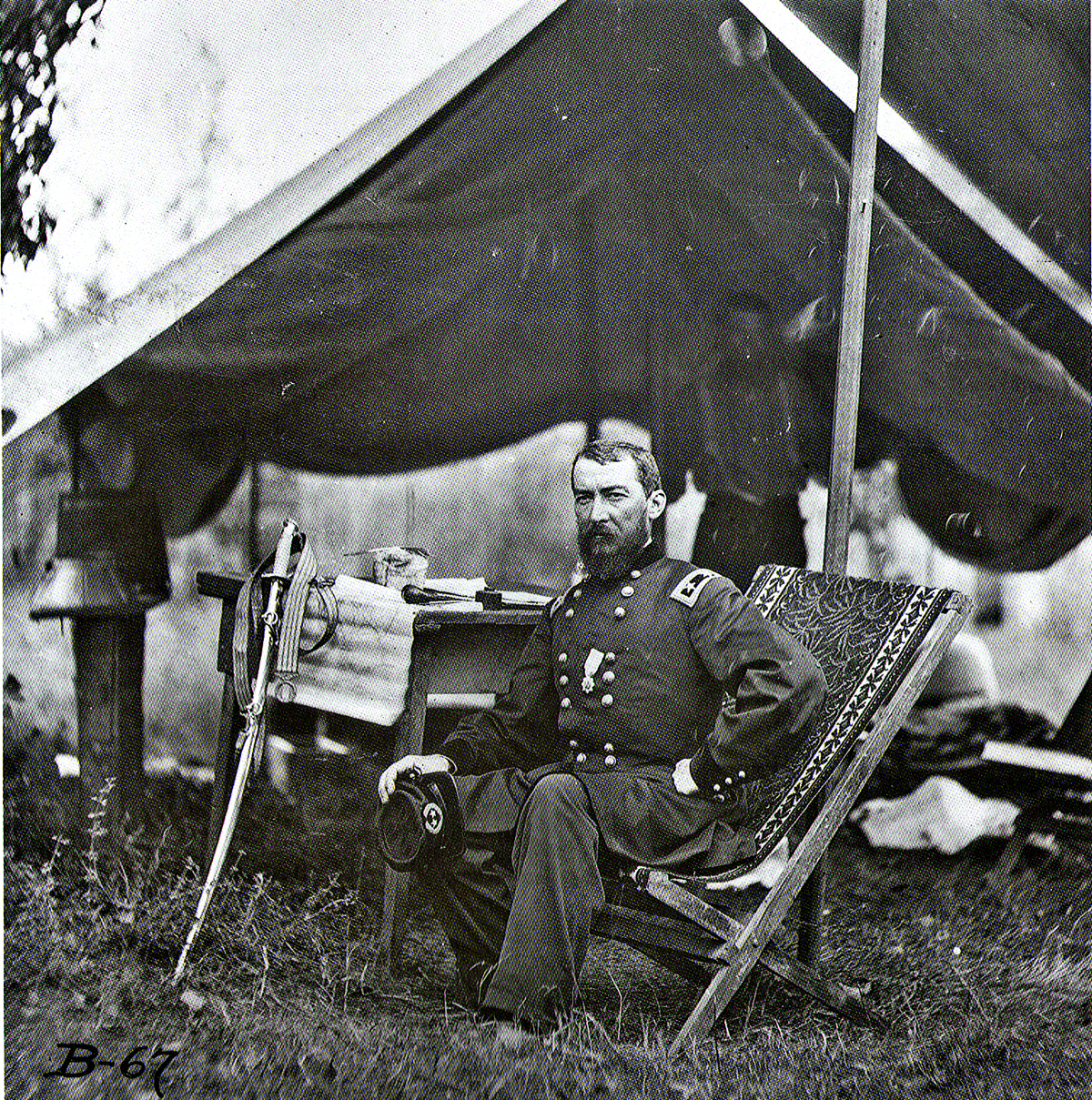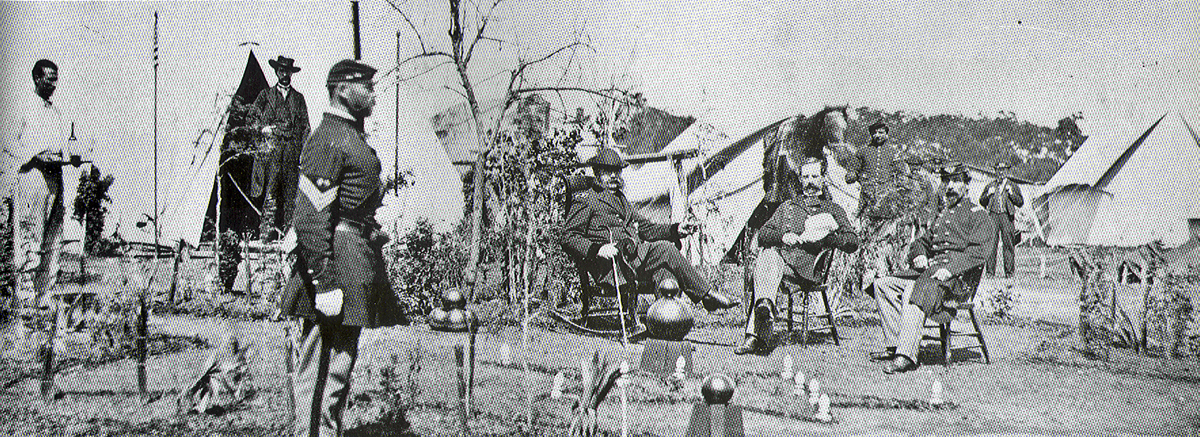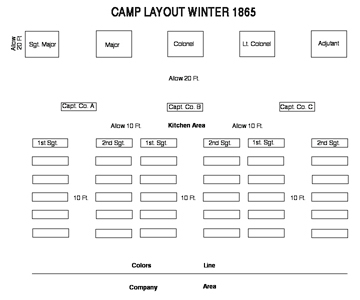|
Headquarters Unit In the Civil War |
|||||
|
Before beginning to examine the structure of a Civil War era Departmental Headquarters unit it might be wise to examine the command structure and basic military organization in place during the American Civil War. The highest ranking officer was the Lieutenant General, followed in decreasing rank by Major General, Brigadier General, Colonel, Lieutenant Colonel, Major, Captain, Lieutenant, Sergeant (various grades) Corporal, and Private. Branches of service included: General Headquarters, Infantry, Artillery, Cavalry, Signalmen, Engineers, Quartermaster, and Commissary. Most of us are familiar with the Infantry, Artillery, and Cavalry and we will be dealing with the makeup of the General Headquarters in this article
These
branches were organized into Armies or Departments, Corps,
Divisions, Brigades, Regiments, Companies, Platoons, and Squads.
Infantry and Cavalry were organized into Corps. An Infantry Corp
had three Infantry Divisions and an Artillery Brigade. A Cavalry
Corp was organized similarly. The other branches mentioned above
were assigned to the Headquarters Unit.
A Unit
Headquarters was organized into two parts, the General Staff and the
Staff Corp. The General Staff included the Chief of Staff, Aides de
Camp, Assistant Adjutant General, and the Assistant Inspector
General. The Staff Corp included the Engineers, Ordinance,
Quartermaster, Subsistence, Medical, Pay, Signal, Provost Marshal,
and Chief of Artillery. In addition, each army headquarters had a
headquarters cook, couriers, an infantry battalion, and a cavalry
escort assigned to it. The Chief of Staff was supposed to be the commanding Generals “right hand” but often this post was given to an officer more as a ceremonial promotion and the Chief of Staff often had very little in the way of duties or responsibility. The Aides de Camp was really the General Staff work horses. It was their job to see that the orders and wishes of the General were carried out. The Assistant Adjutant General was the legal arm of the General Staff. Their job was to draft orders, investigate violations of those orders, bring charges against those who violated those orders and oversee court marshals. Finally, the Assistant Inspector General oversaw the operation of the army under the headquarters command. The Engineers were in charge of mapmaking, designing of military structures, and the construction of such structures. Ordinance was in charge of arms and ammunition. Quartermaster was in charge of supplying the army with the material goods it needed. Subsistence was charged with supplying the army with the foods and provisions it needed. Medical was in charge of providing for the needs of the sick and wounded. Pay was charged with paying the soldiers (when money was available to do so). Signal was in charge of all communications whether it was by messenger, telegraph, or semaphore. Provost Marshal was in charge of security and police matters. Because artillery was not used as its own branch of the service but rather assigned to Infantry and Cavalry Corp, the Chief of Artillery had the responsibility of coordinating the operations of all the Artillery in the various Corp under the headquarters command. The head of each Infantry and Cavalry Corp were assigned to their Corp and were not considered a part of the Headquarters Unit. Camp Equipment in a Headquarters Unit was very sparse due to limits on transportation of that equipment. By a general order issued by Gen. McClellan on August 10, 1862, a Corp Headquarters was allowed four wagons to transport its equipment and a Division or Brigade Headquarters was allowed three wagons. Also, in another general order issued on September 14, 1862, each officer’s personal baggage was limited to one ordinary Mess Chest, one Valise or Carpet Bag and one Blanket.
A headquarters camp was designated by a large national flag. On December 19, 1862, Maj. Gen. Rosecrans issued General Order No. 41 proscribing the headquarters flag (shown above). This flag was to be a national flag measuring 6 feet by 5 feet with a golden eagle below the stars, 2 feet from tip to tip.
Officers’ campsites often included a wall tent, a fly, table and folding chair. The size of the tent varied according to the officer’s rank and would be either one or two rooms. If the tent was a two room tent, one room was for the officer’s personal use and one was for business use. If it was a one room tent then a fly was added. In this case, the tent was for personal use and the fly was for business use. It is interesting to note how the fly was erected. Most flys were built with only three poles, one for the ridge pole and two center upright poles. There were no side poles. The fly instead followed the slope of the tent.
The layout of a camp changed as
circumstances dictated and the war progressed. The photograph below
shows the headquarters camp of Maj. Gen. Christopher C. Augur
outside of Port Hudson, LA in late spring, 1863.
Below is the layout for a regimental winter camp in 1864. It is interesting to note that the company designations do not denote the unit name but rather the seniority of its captain. The most senior captain’s company was placed on the far left of the company streets (Co. A). The second most senior captain’s company was placed on the far right (Co. C). This arrangement continued as companies were filled in toward the center where the least experienced company was placed.
Just as noted earlier regarding the layout of each camp, each headquarters unit was its own individual entity and its make up varied according to the situation, the commander of the headquarters, and even the time of year. Thus, the information given above is a general overview and to determine how a particular headquarters was organized it would be wise to study it on a case by case basis. |
|||||
|
References
http://arkansastoothpick.com |
|||||
| Return to
Homepage Return to Programs |
(07/11/2009) |
||||



